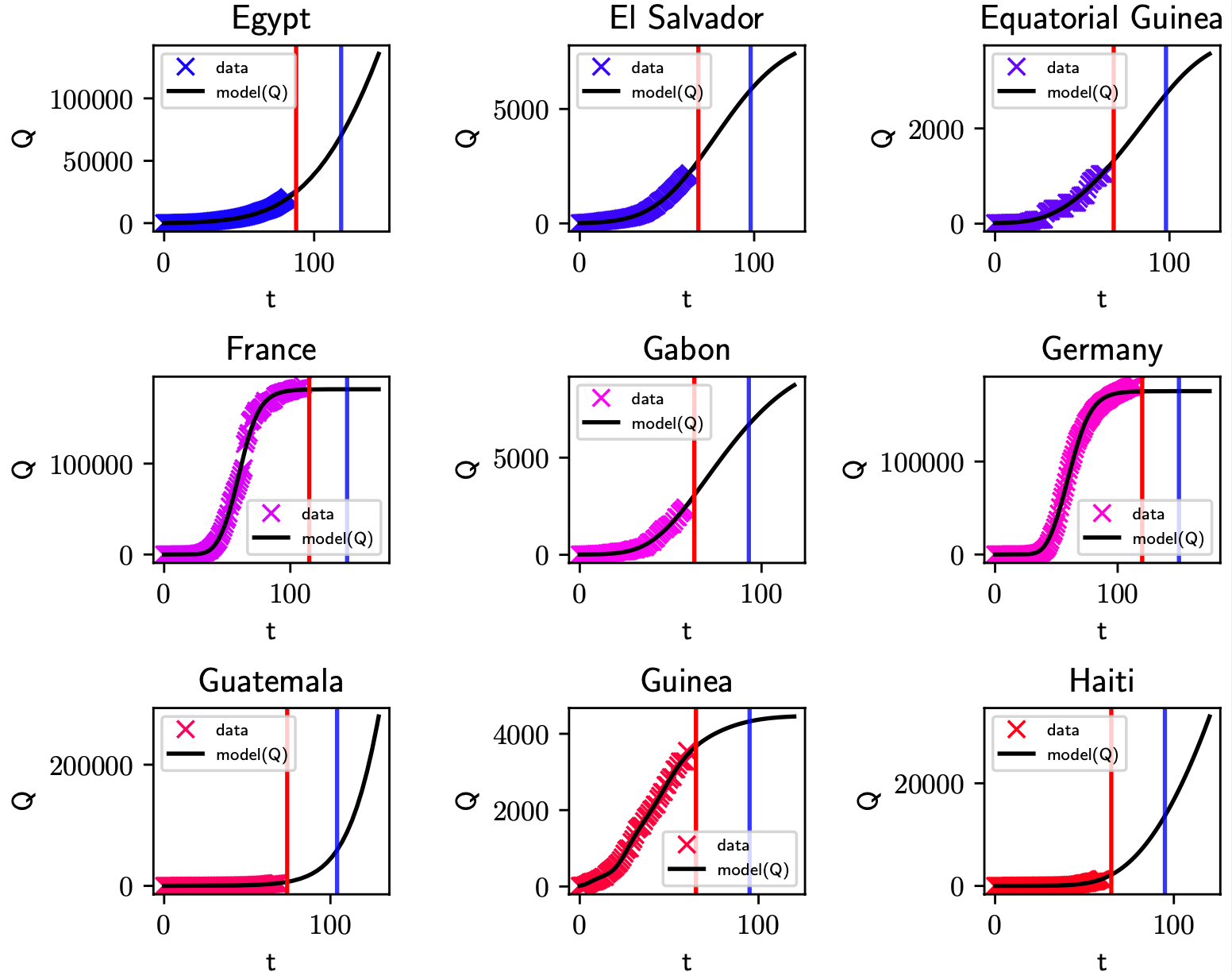Background
The severe acute respiratory syndrome coronavirus 2 (SARS-CoV-2), first identified in December 2019 in Wuhan, China, has since spread throughout the world resulting in more than 6.63 million reported infections and 391,000 deaths. As a vaccine is not expected before 2021, currently several non-pharmaceutical interventions such as quarantine, social-distancing, lockdown, shutdowns etc. have been implemented world-wide. However, this has led to unprecedented slowdown of economic activity. There is a lot at stake here. Within this context, there are several open questions.
Strategy
A novel multiscale mathematical model called the Lattice-SIRQL that takes into account spatial interactions, lockdown measures and quarantine procedures has been proposed for the analysis of the global dynamics of the infection. Using reported data from 105 countries, country-specific model parameters were computed using a global minimization algorithm. According to this procedure, country-specific non-pharmaceutical measures such as lockdown, quarantine and testing is implicitly taken into account. To study the influence of lockdown intensity, lockdown duration and relaxation rate at small geographic scales, an individual-based model was developed that takes into account complex interactions at the scale of a single individual.

Findings
Large scale spatially resolved simulations showed that global indicators for COVID-19 can be misleading and that a possibility of a second wave cannot be ruled-out. Using a data-driven approach, country specific recommendations for lockdown continuation and lockdown relaxation have been made (see link). With regards to lockdown procedures, simulations using the individual-based model showed that inefficient lockdown procedures could simply delay the infection. Such sub-optimal measures will not reduce the number of peak infections (i.e. flatten the curve). Moreover, model predictions showed that asymptomatic cases can significantly extend the lifetime of the disease. This was recently confirmed by the WHO on 9 June. This was few days after our paper was uploaded on the medArxiv server.

For detailed information see the paper:
Timothy, Holla & Meschke:
Multiscale Dynamics of COVID19 and Model-Based Recommendations for 105 countries
doi:10.1101/2020.06.05.20123547
https://www.medrxiv.org/content/10.1101/2020.06.05.20123547v1
Dr.-Ing. Jithender J. Timothy
timothy.jithenderjaswant@rub.de
+49 234 / 32-29070
Vijaya Holla
vijaya.holla@ruhr-uni-bochum.de
Meschke.html" target="_blank">Prof. Dr. techn. Günther Meschke
guenther.meschke@rub.de
+49 234 / 32-29051

Rodolfo Javier Williams Moises presented his doctoral theses with the title "Computational Modeling
more...
The open access article "Efficient snap-to-contact computations for van der Waals interacting fibers
more...